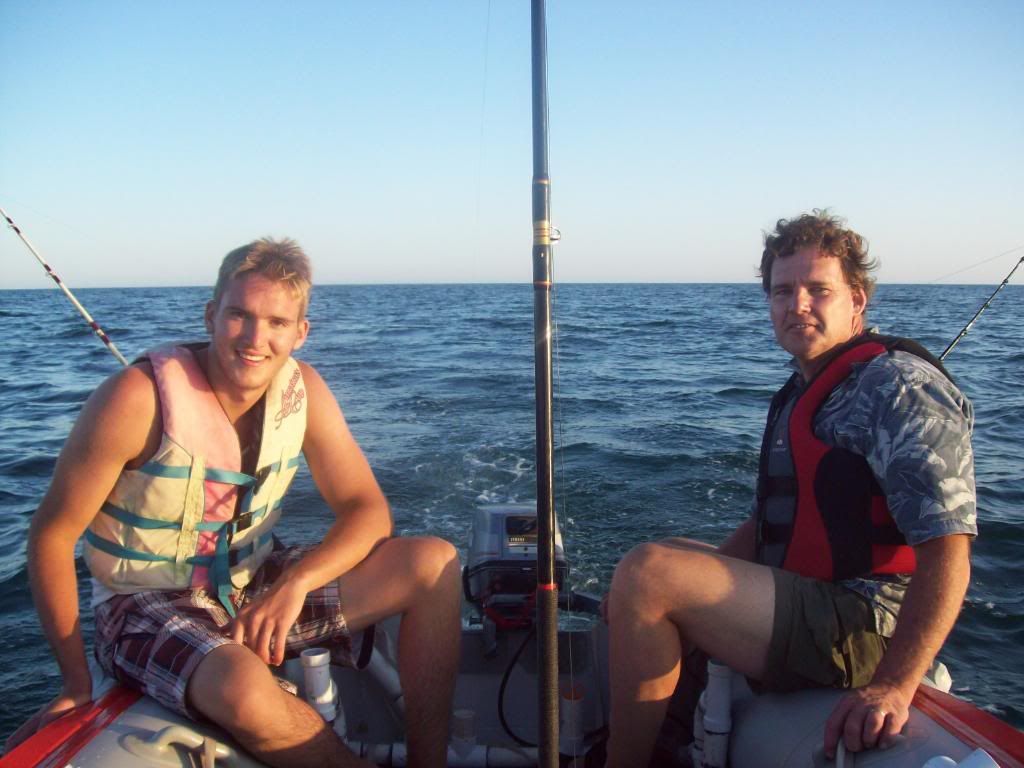Hi!
Inflatables... they are a fantastic way to fish/play (we've towed tubes). But first some background info.
Started fishing PP with my Father and Brothers in early 70's. Fished from tin boats, but when it became breezy, it was time to get off the water. Spent many days on shore looking at a white-capping ocean, tin boats were too small. Panga's didn't go out much because of rough ride and high fuel consumption. Gotta' be a better way. Buy a larger tin boat! Wrong, still have to get off a white-capping ocean, due to boat wallowing in swells, copious amounts of water coming over gunwales with spray and whitecaps. Then you have to try and recover boat with no boat ramp (soft sand), breakers breaking over stern, gear floating in the boat, trailer and vehicle sinking as tide pulls sand away from tires-boat now weighs hundreds of extra pounds, your trip fishing trip sinking fast. Gotta' be a better way...
Did research on inflatables back in the early 90's. The life guards of the Great Barrier Reef choose inflatables for sea rescues. At that time you could enter a lottery draw to go out with them jumping huge rollers. Cost was a measly 2500. US dollars, so an ad read... They also had quite a few pics of their inflatables in action in extreme ocean conditions...
Did more research on inflatables-looked at fish eagles and similar boats. Living in Flag, spoke to a river guides (CO river) about their boats. Their boats are made of hypalon. Same material as the boats in Autralia, and the Navy Seals. Hypalon has been around for years, and will last years? Fish Eagles are pvc and so are newer inflatables made by Zodiac. I'm sure the zodiac utilize thicker pvc, but the reason why they (Zodiac) went to pvc was because of production speed and cost. Hypalon boats are hand made, whereas pvc boats seams are welded by a machine. Unfortunately pvc will not last for years, plus fuel and oil diminishes pvc life considerably (info from a boat dealer).
Bought my first inflatable a 10 footer from ebay back in the mid 90's. Was not sure if that was the answer, so I started small.

This is a pic of the boat after I customized it for fishing. The capacity of the boat is almost 1000 pounds (motor, people, gear). I created the rod holders to keep things ship shape-critical when your going through breakers or bringing fighting fish aboard.
Inflatables are extremely safe.
We took this boat out in 3 to 4 foot breakers with several of our older children and myself aboard, (all wearing life jackets) and put this small boat to a test. I purposely shut the engine off and let the waves push us to shore. The idea was to allow the the boat to broach in the swell (turn windward/sideways) and see if the breakers would flip the boat. The kids held on (everyone was prepared to go swimming) and i simply sat on the edge of the tube, not holding on to anything, kind of like a bottle just sitting on the tube. As the boat road up the swell and over the breaker, I simply tumbled off (I was on the low side), and the breaker simply pushed the boat along, down the swell, and onto the beach (the motor had been raised).
Another trip out in that boat, we had aboard one of our Daughters, (17), a friends son, (17, HS football player) and myself (210#). We were cleaning up on fish and had forgotten the ice chest (not that there was much room) but, what to do with all the fish? So, I pulled the drain plug and used the boat as a live well, intending to let in a small amount of water. Only two inches of water would come into the boat-no more. Those tubes provide a huge amount of buoyancy. We were only about 1/4 mile from shore, but we always wear life jackets. End of that trip, lots of live fish in the bottom of boat. It was a blast and we still talk about it.


